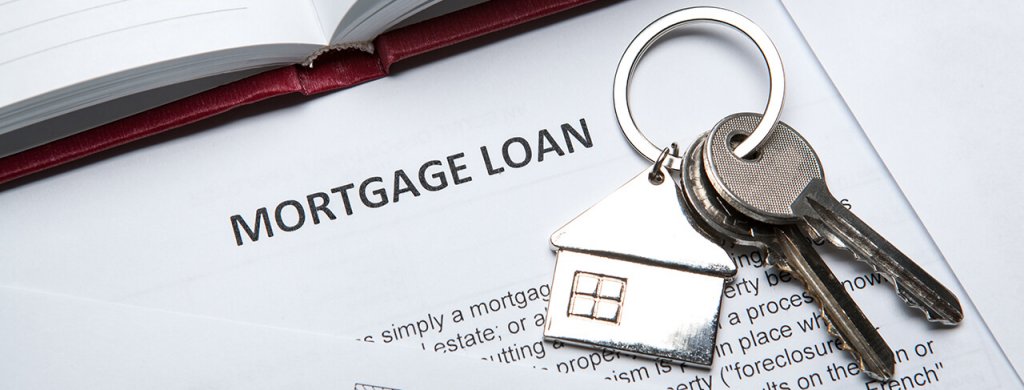The Tax Cuts and Jobs Act (TCJA) changes the rules for deducting interest on home loans. Most homeowners will be unaffected because favorable grandfather provisions will keep the prior-law rules for home acquisition debt in place for them.
However, many homeowners will be adversely affected by the TCJA provision that generally disallows interest deductions for home equity loans for 2018 through 2025. This article explains what you need to know to avoid unpleasant surprises when you file your taxes for 2018.
What’s Changing?
For 2018 through 2025, the new tax law generally allows you to treat interest on up to $750,000 of home acquisition debt (incurred to buy or improve your first or second residence) as deductible qualified residence interest. If you use married-filing-separately status, the limit is halved to $375,000. Thanks to grandfather provisions for pre-TCJA mortgages, this change will mainly affect new buyers who take out large mortgages.
Under one grandfather rule, the TCJA changes don’t affect up to $1 million of home acquisition debt that was taken out:
- Before December 16, 2017, or
- Under a binding contract that was in effect before December 16, 2017, as long as your home purchase closed before April 1, 2018.
Under a second grandfather rule, the TCJA changes don’t affect up to $1 million of home acquisition debt that was taken out before December 16, 2017, and then was later refinanced. But there’s an important caveat to remember: The initial principal balance of the new loan can’t exceed the principal balance of the old loan at the time of the refinancing.
In addition, for 2018 through 2025, the TCJA generally eliminates the provision of the tax law that previously allowed you to treat interest on up to $100,000 of home equity debt ($50,000 for those who use the married-filing-separately status) as deductible qualified residence interest.
Important note: These changes are in effect only through 2025. For 2026 and beyond, the old rules for home acquisition debt and home equity debt are scheduled to come back, unless Congress extends them or makes them permanent. (See “”Old Rules for Mortgage Interest Deductions”” at right.)
Home Equity Loan Questions and Answers
The new tax law’s general disallowance of deductions for home equity loan interest has created uncertainty among homeowners who itemize deductions on their federal tax returns. Here are examples of questions we’ve received from clients, along with answers based on our interpretations of the statutory language and what little IRS guidance has been issued so far:
Question 1: In January 2018, I took out a $100,000 home equity line of credit (HELOC). I spent the proceeds to pay off credit card balances, car loans and student loans. Can I deduct the interest on my 2018 return?
Answer 1: No. You didn’t spend the HELOC proceeds to buy or improve your first or second home. So, it’s classified for tax purposes as home equity debt. For 2018 through 2025, you’re unable to treat interest on home equity debt as deductible qualified residence interest.
Question 2: Can I still deduct the interest on my $100,000 home equity loan that I took out before the new law?
Answer 2: Maybe. The answer is no if you didn’t spend the proceeds to buy or improve your first or second residence. That’s because, for 2018 through 2025, you can no longer deduct interest on a mortgage loan that’s classified for tax purposes as home equity debt.
The answer could be yes — if you spent all the home equity loan proceeds to buy or improve your first or second home. If you have no more than $900,000 of first-mortgage acquisition debt, you can treat the $100,000 home equity loan as additional acquisition debt that doesn’t exceed the $1 million limit for grandfathered pre-TCJA acquisition debt. If that’s your situation, you can treat the interest on both loans as deductible qualified residence interest.
One challenge taxpayers may encounter under the new tax law is substantiating how much pre-TCJA home equity debt was used to “”buy, build or substantially improve the taxpayer’s home that secures the loan.”” Under the old rules, taxpayers weren’t required to make a distinction between using home equity debt for home improvements vs. other uses — unless they were subject to the alternative minimum tax (AMT). So, starting in 2018, some taxpayers may need to dig out old invoices and create a schedule of expenses to support their mortgage interest deductions.
Question 3: In January 2018, I took out a $500,000 first mortgage to buy my main home. In February 2018, I took out a $250,000 home equity loan to pay for an addition to the same house. Can I deduct the interest on both loans?
Answer 3: Yes. You can treat both loans as home acquisition debt, because the combined balance doesn’t exceed the TCJA limit of $750,000. So, you can treat the interest on both loans as deductible qualified residence interest.
Question 4: In January 2018, I took out a $500,000 first mortgage to buy my main home. That loan is secured by my main home. In February 2018, I took out a $250,000 loan to buy a vacation home. That loan is secured by the vacation home. Can I deduct the interest on both loans?
Answer 4: Yes. The combined balance of the two loans doesn’t exceed the $750,000 TCJA limit for home acquisition debt. So, you can treat the interest on both loans as deductible qualified residence interest.
However, if you instead took out a $250,000 home equity loan against your main home to buy the vacation home, the IRS says the interest on the home equity loan does notqualify as home acquisition debt, because it isn’t secured by the vacation home. Instead, it is classified as home equity debt; so, you can’t treat the interest on that loan as deductible qualified residence interest for 2018 through 2025.
Question 5: In July 2017, I took out an $800,000 loan to buy my main home. In March 2018, I obtained a HELOC and borrowed $80,000 to remodel my bathrooms. How much interest can I deduct for 2018 through 2025?
Answer 5: You can treat the interest on the first mortgage as deductible qualified residence interest under the grandfather rule for up to $1 million of pre-TCJA acquisition debt.
However, because your $80,000 HELOC was taken out in 2018, the TCJA $750,000 limit on home acquisition debt apparently precludes any deductions for the HELOC interest. That’s because the entire $750,000 TCJA limit on home acquisition debt was absorbed (and then some) by your grandfathered $800,000 first mortgage. So, the HELOC apparently must be treated as home equity debt, and interest on home equity debt can’t be treated as deductible qualified residence interest for 2018 through 2025.
Question 6: In early 2017, I took out a $650,000 loan to buy my main home. In March 2018, I obtained a HELOC and borrowed $80,000 to expand and remodel my kitchen. How much interest can I deduct for 2018 through 2025?
Answer 6: You can treat all the interest on the first mortgage as deductible qualified residence interest under the grandfather rule for up to $1 million of acquisition debt. The $80,000 HELOC balance also can be treated as home acquisition debt, because the combined balance of the first mortgage and the HELOC is only $730,000, which is under the $750,000 TCJA limit. So you can treat the interest on both loans as deductible qualified residence interest for 2018 through 2025.
The rules for deducting home mortgage interest under the new tax law can get complicated. If you have additional questions or need help substantiating your qualified residence interest deduction, contact your tax advisor.
©2018



